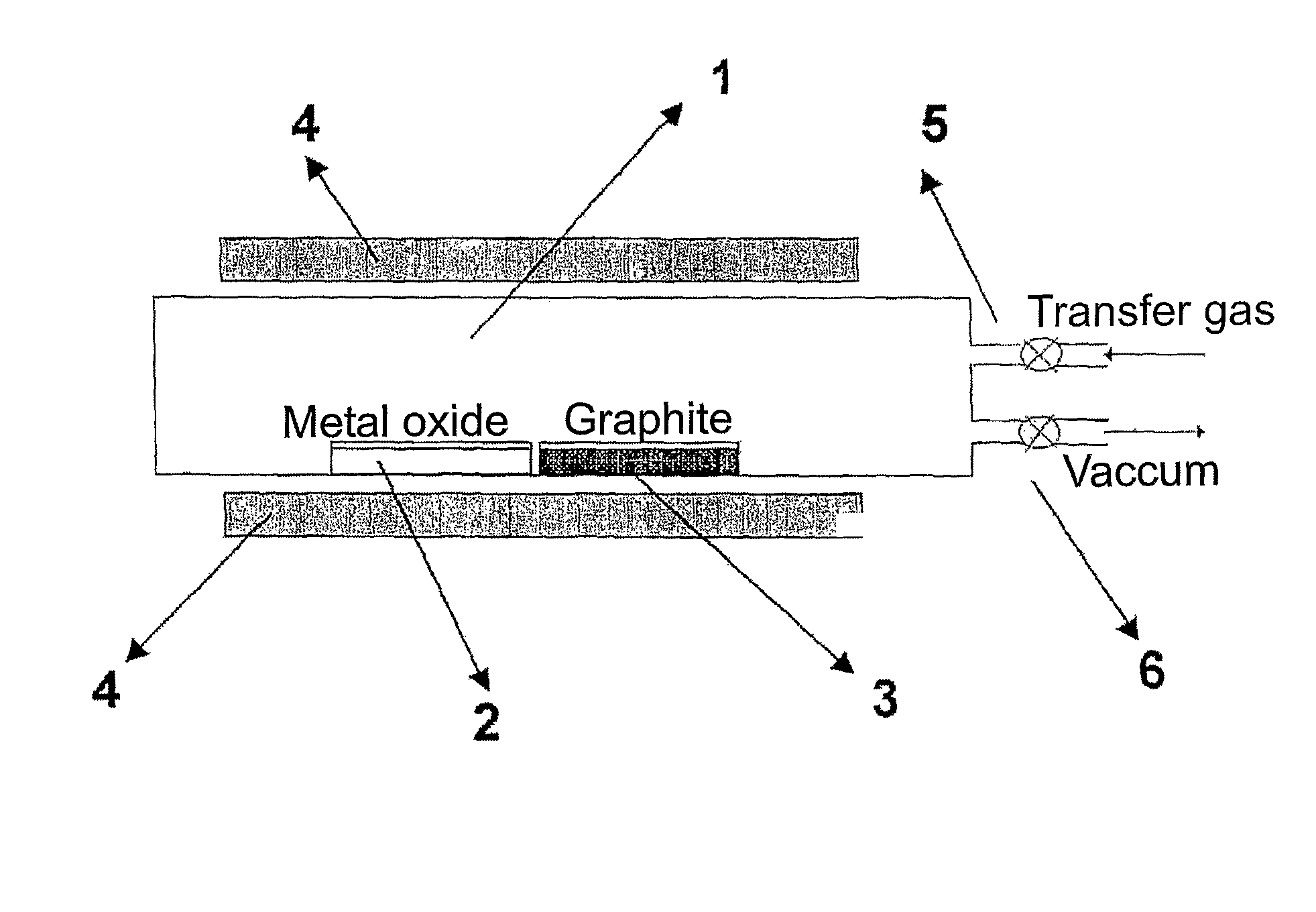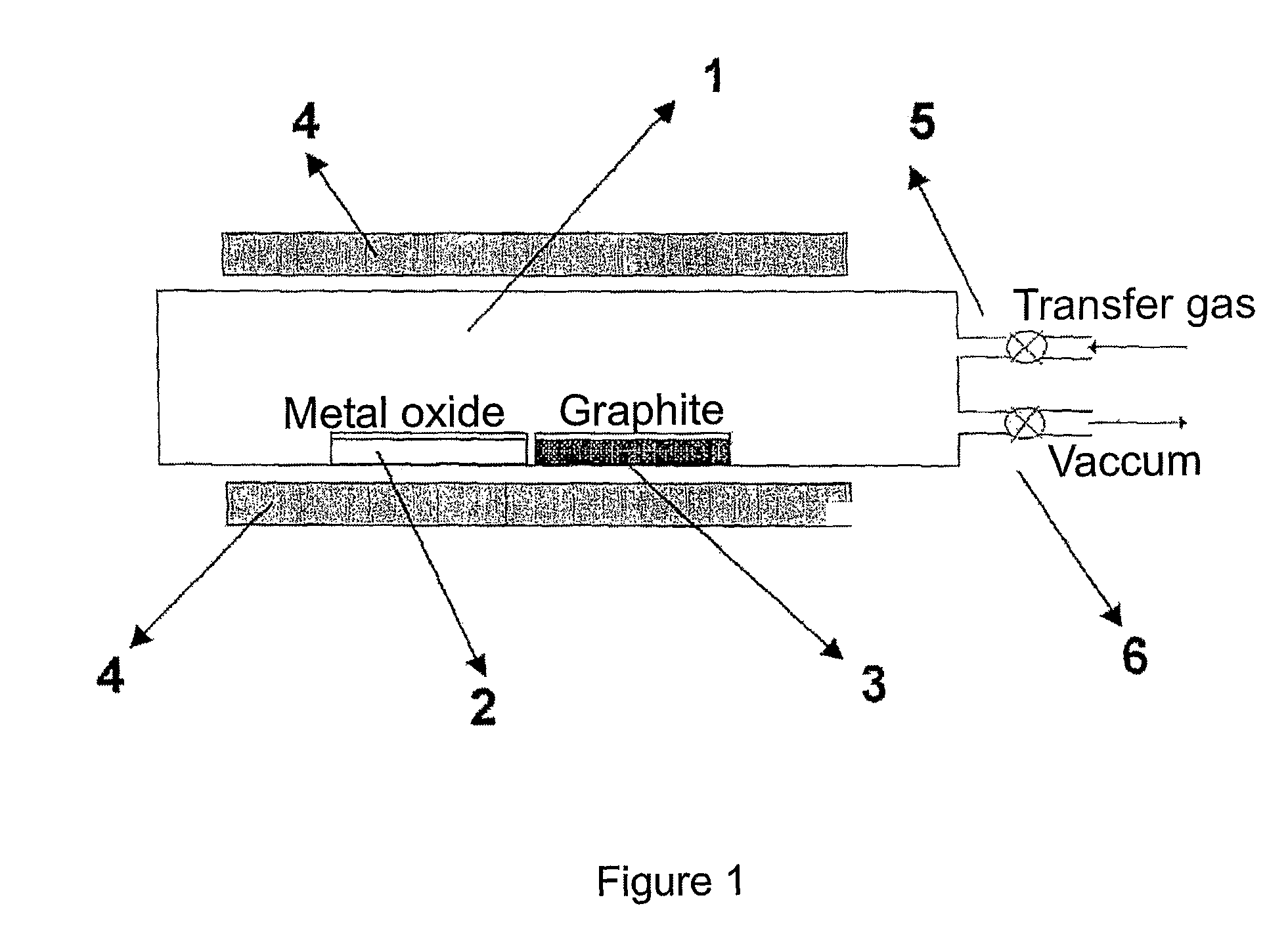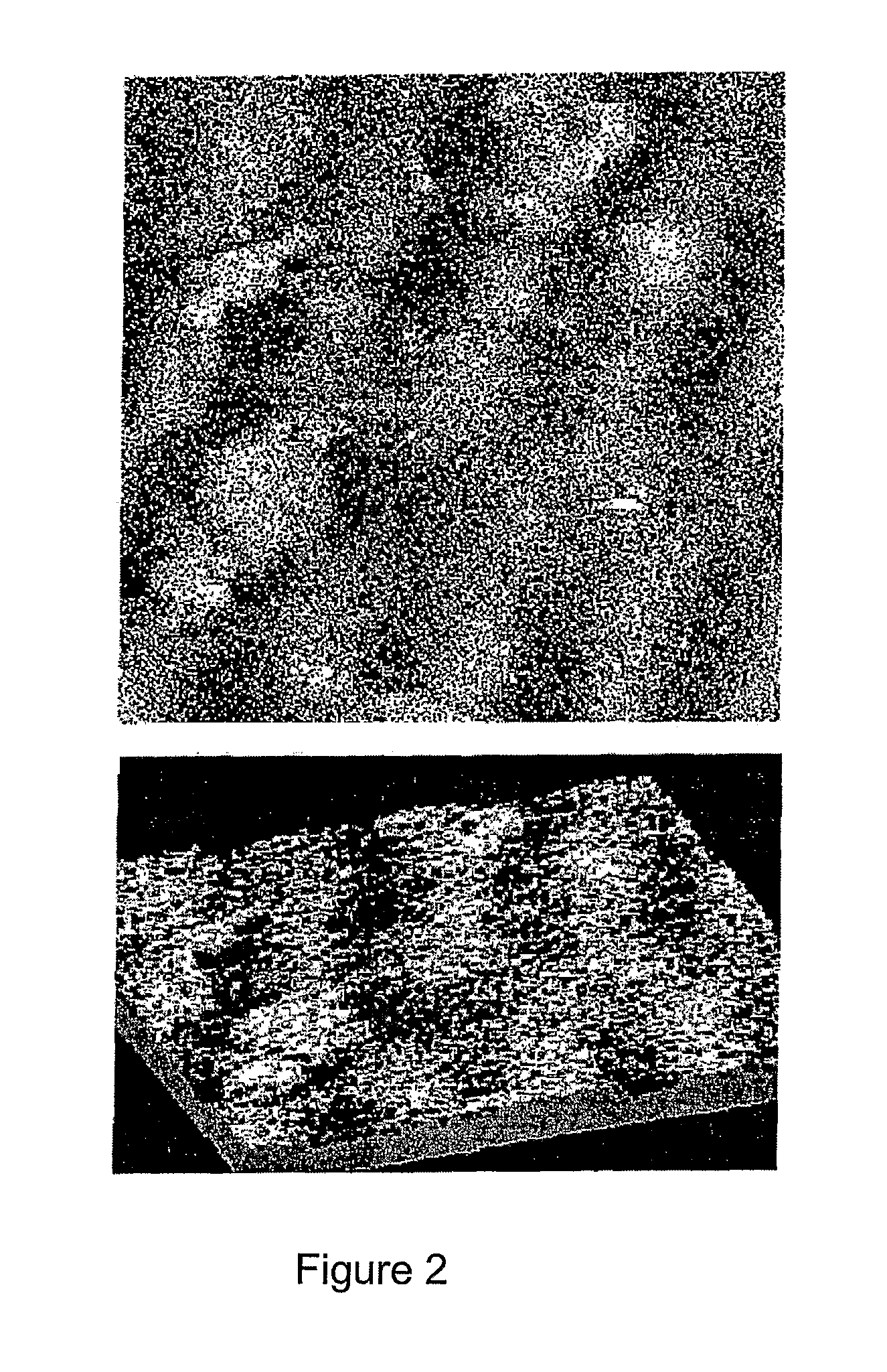Process for preparing magnetic graphitic materials, and materials thereof
a technology of magnetic graphite and graphite, which is applied in the direction of magnetic paint, magnetic body, magnetism of organic/organic metal materials, etc., can solve the problems of difficult to believe the existence of pure carbon materials that could exhibit this type of property, materials having applicable ferromagnetic behavior, and few systems proved to have this property
- Summary
- Abstract
- Description
- Claims
- Application Information
AI Technical Summary
Benefits of technology
Problems solved by technology
Method used
Image
Examples
Embodiment Construction
Therefore, the present process of obtaining a graphitic material having long-lasting magnetic properties at room temperature is basically an oxidative attack on pure graphite, originated from a proportion of oxygen from the decomposition, at a temperature between that of the beginning of the reaction of about 600° C. and the melting temperature of the oxide or mixture of metal transition oxides in a closed system and in the presence of a transfer inert gas.
Alternatively, the proportion of oxygen may be originated from oxygen gas in amounts equivalent to those obtained from the decomposition of the oxide or mixture of transition metal oxides.
Pure graphite is useful for the present process, which is commercially available. In order to facilitate contacting graphite with the oxidizing gas from the decomposition of the transition metal oxide, pure powdered graphite is used, which is held in a container inside a reactor in closed system, as will be detailed hereinafter. Typically, and by...
PUM
| Property | Measurement | Unit |
|---|---|---|
| temperature | aaaaa | aaaaa |
| reaction time | aaaaa | aaaaa |
| diameters | aaaaa | aaaaa |
Abstract
Description
Claims
Application Information
 Login to View More
Login to View More - R&D
- Intellectual Property
- Life Sciences
- Materials
- Tech Scout
- Unparalleled Data Quality
- Higher Quality Content
- 60% Fewer Hallucinations
Browse by: Latest US Patents, China's latest patents, Technical Efficacy Thesaurus, Application Domain, Technology Topic, Popular Technical Reports.
© 2025 PatSnap. All rights reserved.Legal|Privacy policy|Modern Slavery Act Transparency Statement|Sitemap|About US| Contact US: help@patsnap.com



